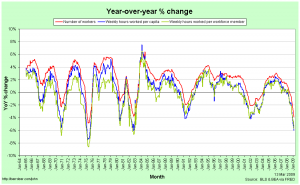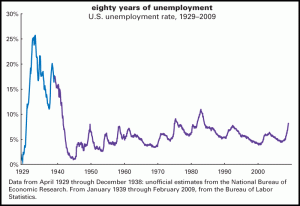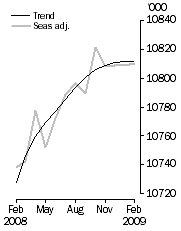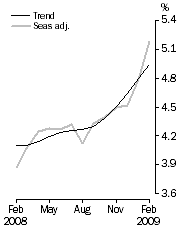The recent naming of the AIG counterparties [press release, NY Times coverage] reminded me of something and this post by Brad Setser has inspired me to write on it.
Back in January, I wrote a post that contained some mistakes. I argued that part of the reason that the M1 money multiplier in America fell below unity was because foreign banks with branches in America and American banks with branches in other countries were taking deposits from other countries and placing them in (excess) reserve at the Federal Reserve.
My first mistake was in believing that that was the only reason why the multiplier fell below one. Of course, even if the United States were in a state of autarky it could still fall below one as all it requires is that banks withdraw from investments outside the standard definitions of money and place the proceeds in their reserve account at the Fed.
And that was certainly happening, because by paying interest on excess reserves, the Fed placed a floor under the risk-adjusted return that banks would insist on receiving for any investment. Any position with a risk-free-equivalent yield that was less than what the Fed was paying was very rapidly unwound.
Nevertheless, I believe that my idea still applies in part. By paying interest on excess reserves, the Fed (surely?) also placed a floor under the risk-adjusted returns for anybody with access to a US depository institution, including foreign branches of US banks and foreign banks with branches in America. The only difference is that those groups would also have had exchange-rate risk to incorporate. But since the US dollar enjoys reserve currency status, it may have seemed a safe bet to assume that the USD would not fall while the money was in America at the Fed because of the global flight to quality.
The obvious question is to then ask how much money held in (excess) reserve at the Fed originated from outside of America. Over 2008:Q4, the relevant movements were: [1]
- the m1 money stock rose roughly US$190 billion
- the monetary base rose a little over US$756 billion
- currency rose slightly more than US$42
- excess reserves rose just over $707 billion
Remember that, roughly speaking, the definitions are:
- monetary base = currency + required reserves + excess reserves
- m1 = currency + demand deposits
So we can infer that next to the $707 billion increase in excess reserves, demand deposits only increased by $148 billion and required reserves by $7 billion.
In a second mistake in my January post, I thought that it was the difference in growth between m1 and the monetary base that needed explaining. That was silly. Strictly speaking it is the entirety of the excess reserve growth that we want to explain. How much was from US banks unwinding domestic positions and how much was from foreigners?
Which is where we get to Brad’s post. In looking at the latest Flow of Funds data from the Federal Reserve, he noted with some puzzlement that over 2008:Q4 for the entire US banking system (see page 69 of the full pdf):
- liabilities to domestic banks (floats and discrepancies in interbank transactions) went from $-50.9 billion to $-293.4 billion.
- liabilities to foreign banks went from $-48.1 billion to $289.5 billion
I’m not sure about the first of those, but on the second that represents a net loan of $337.6 billion from foreign banks to US banks over that last quarter.
Could that be foreign banks indirectly making use of the Fed’s interest payments on excess reserves?
No matter what the extent of foreign banks putting money in reserve with the Fed, that process – together with the US government-backed settlements of AIGs foolish CDS contracts – amounts to America (partially) recapitalising not just its own, but the banking systems of the rest of the world too.
[1] M1 averaged 1435.1 in September and 1624.7 in December. Monetary base averaged 936.138 in September and 1692.511 in December. Currency averaged 776.7 in September and 819.0 in December. Excess reserves averaged 60.051 in September and 767.412 in December. Remember that the monthly figures released by the Federal Reserve are dated at the 1st of the month but are actually an average for the whole of the month.





